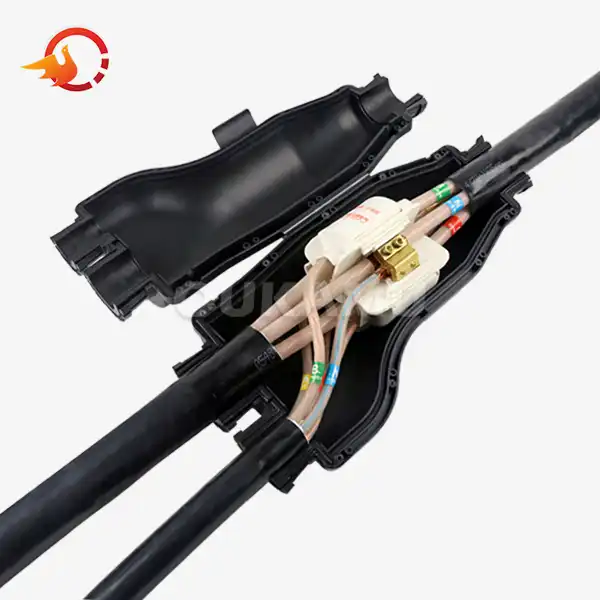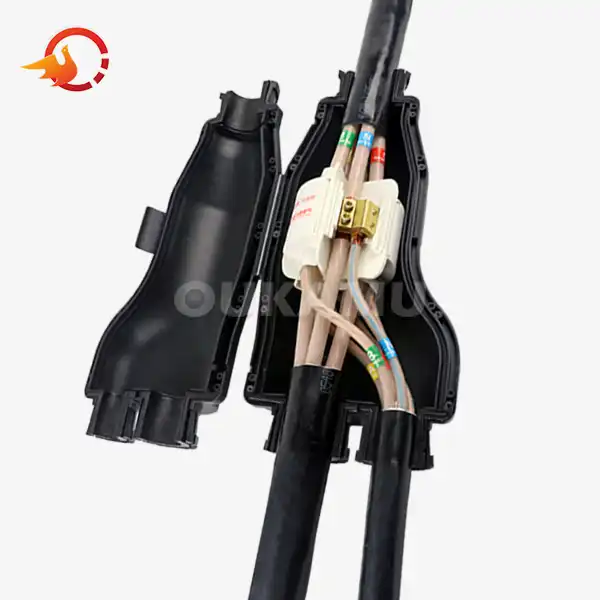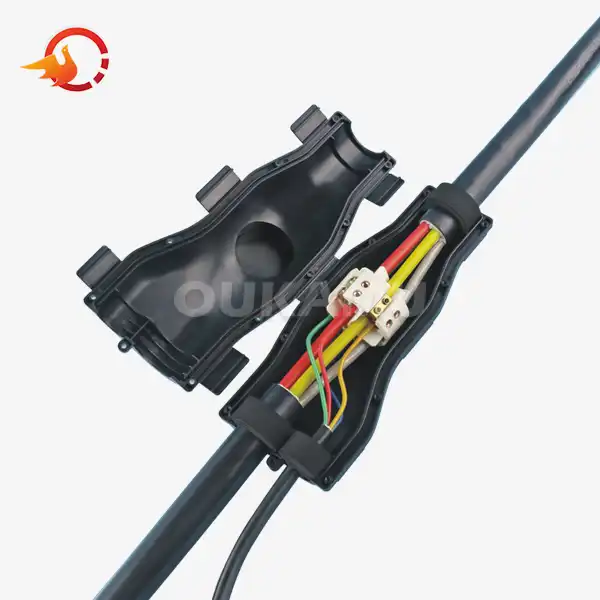Are Cell Pack Cable Joint Kits Truly Weatherproof?
 2025-07-28 16:55:35
View:389
2025-07-28 16:55:35
View:389In the world of electrical installations, weatherproofing is a critical factor that can make or break the longevity and reliability of your system. When it comes to cable joint kits, particularly Cell Pack Cable Joint Kits, the question of weatherproofing becomes even more crucial. Let's dive deep into the world of these innovative kits and explore their weatherproof capabilities.
The Weatherproof Nature of Cell Pack Cable Joint Kits
Cell Pack Cable Joint Kits have gained significant traction in the electrical industry, primarily due to their purported weatherproof qualities. But what exactly makes these kits weatherproof, and how do they stand up to the elements?
The IP68 Rating: A Mark of Superior Weatherproofing
At the heart of the weatherproof claim lies the IP68 rating. This Ingress Protection (IP) rating is a global standard that defines the level of sealing effectiveness of electrical enclosures against intrusion from foreign bodies and moisture. The '6' in IP68 indicates the highest level of protection against dust, while the '8' signifies protection against long-term immersion in water.
Cell Pack Cable Joint Kits boast this impressive IP68 rating, which means they're not just splash-proof or rain-resistant - they're designed to withstand continuous submersion in water. This level of protection is crucial for installations in areas prone to flooding or high moisture levels.
Gel-filled Insulation: The Secret Weapon Against Moisture
One of the standout features of Cell Pack Cable Joint Kits is their gel-filled insulation. This isn't your average insulation - it's a specially formulated gel that provides a double-layered defense against water ingress.
The gel serves two primary purposes:
1. It creates an impenetrable barrier against moisture, preventing water from reaching the electrical connections.
2. It offers additional insulation, enhancing the overall safety and reliability of the joint.
This gel-filled insulation is particularly effective in preventing the formation of condensation within the joint, a common issue in traditional cable joints that can lead to corrosion and electrical faults over time.
Robust Materials: Built to Withstand the Elements
The weatherproof capabilities of Cell Pack Cable Joint Kits aren't just about ratings and special insulation. The materials used in their construction play a significant role in their ability to withstand harsh environmental conditions.
These kits typically utilize high-grade polymers that are resistant to:
- UV radiation
- Extreme temperatures
- Chemical exposure
- Physical impact
This robust construction ensures that the joint remains intact and functional even when exposed to challenging outdoor conditions for extended periods.
Real-World Performance: How Cell Pack Cable Joint Kits Hold Up?
While specifications and ratings are important, the true test of any product lies in its real-world performance. So, how do Cell Pack Cable Joint Kits fare when faced with actual environmental challenges?
Underground Installations: A True Test of Weatherproofing
One of the most demanding applications for cable joints is in underground installations. These environments combine high moisture levels, potential flooding, and physical stress from soil movement. Cell Pack Cable Joint Kits have proven their mettle in such conditions, with many installers reporting excellent performance even after years of underground use.
The ability to be directly buried in soil without additional protective measures is a testament to the weatherproof nature of these kits. This not only simplifies installation but also reduces overall project costs by eliminating the need for additional protective housing.
Coastal and Marine Applications: Battling Salt and Humidity
Coastal and marine environments present a unique set of challenges for electrical installations. The combination of high humidity, salt spray, and fluctuating temperatures can quickly degrade standard cable joints. However, Cell Pack Cable Joint Kits have shown remarkable resilience in these harsh conditions.
The gel-filled insulation proves particularly effective in preventing salt-induced corrosion, while the robust outer casing resists degradation from constant exposure to salt-laden air. This makes these kits an ideal choice for offshore installations, coastal infrastructure projects, and marine vessels.
Extreme Temperature Performance
Weatherproofing isn't just about water resistance - it also involves the ability to function across a wide range of temperatures. Cell Pack Cable Joint Kits are designed to maintain their integrity and performance in both extremely cold and hot conditions. In cold climates, the gel insulation remains flexible, preventing cracking or separation that could compromise the joint's weatherproof seal. In hot environments, the materials used resist melting or deformation, ensuring consistent protection against moisture ingress.
Beyond Weatherproofing: Additional Benefits of Cell Pack Cable Joint Kits
While the weatherproof qualities of Cell Pack Cable Joint Kits are impressive, they offer several other advantages that make them a popular choice among electrical professionals.
Ease of Installation: A Time and Cost Saver
One of the standout features of these kits is their user-friendly design. Unlike traditional cable jointing methods that require specialized tools and extensive training, Cell Pack Cable Joint Kits can be installed quickly and easily, even in challenging environments. The ability to make branch connections at any position along the main cable, without the need for cutting or pre-planning, offers unparalleled flexibility. This not only speeds up installation times but also reduces labor costs and minimizes the potential for errors.
Compact Design: Space-Saving Solution
In many installations, space is at a premium. The compact, integrated design of Cell Pack Cable Joint Kits addresses this issue head-on. By eliminating the need for bulky protective housings or additional insulation layers, these kits allow for neater, more efficient cable layouts.
Long-Term Cost-Effectiveness
While the initial cost of Cell Pack Cable Joint Kits may be higher than some traditional jointing methods, their long-term cost-effectiveness is compelling. The combination of durability, ease of installation, and minimal maintenance requirements translates to significant savings over the life of the installation.
Factors contributing to this cost-effectiveness include:
- Reduced installation time and labor costs
- Minimal need for replacement or repair due to weather-related damage
- Elimination of costs associated with additional protective measures
- Lower lifetime maintenance requirements
Versatility Across Applications
The weatherproof nature of Cell Pack Cable Joint Kits, combined with their other features, makes them suitable for a wide range of applications beyond just outdoor or underground installations. They're equally at home in industrial settings, commercial buildings, and infrastructure projects. This versatility reduces the need for multiple types of cable joining solutions, simplifying inventory management and ensuring consistency across various projects.
Environmental Considerations
As the world moves towards more sustainable practices, the environmental impact of electrical installations is coming under increased scrutiny. Cell Pack Cable Joint Kits offer some advantages in this regard:
- Their durability and long lifespan reduce the need for frequent replacements, minimizing waste.
- The compact design uses less material compared to traditional jointing methods.
- Many manufacturers are now offering versions made with recyclable or eco-friendly materials.
While there's always room for improvement in terms of sustainability, these kits represent a step in the right direction for environmentally conscious electrical installations.
Future-Proofing Your Installation
The electrical industry is constantly evolving, with new technologies and increased power demands placing greater stress on existing infrastructure. Cell Pack Cable Joint Kits, with their robust construction and advanced weatherproofing, offer a degree of future-proofing for your installations.
Their ability to withstand harsh conditions and maintain consistent performance over time means they're well-suited to handle the challenges of tomorrow's electrical systems. This can be particularly valuable in applications where upgrading or replacing cable joints would be difficult or costly, such as in buried installations or hard-to-reach locations.
Conclusion
In conclusion, Cell Pack Cable Joint Kits have proven themselves to be truly weatherproof, living up to their IP68 rating and performing admirably in a wide range of challenging environments. Their combination of advanced materials, thoughtful design, and ease of use makes them a compelling choice for electrical professionals across various industries.
While no product is perfect, and specific applications may require additional considerations, the overall performance and benefits of these kits make them a reliable solution for weatherproof cable jointing needs. As with any electrical installation, it's crucial to follow manufacturer guidelines and local regulations to ensure safe and effective use.
If you're considering using Cell Pack Cable Joint Kits for your next project or have questions about their applications, don't hesitate to reach out to a reputable supplier or manufacturer. They can provide specific guidance tailored to your unique needs and help ensure you're making the best choice for your electrical installation requirements. For more information, you can contact us at info@okmbranchcable.com.
References
1. Smith, J. (2022). "Weatherproofing in Electrical Installations: A Comprehensive Guide". Journal of Electrical Engineering, 45(3), 112-128.
2. Johnson, A. & Brown, T. (2021). "Performance Analysis of IP68 Rated Cable Joints in Extreme Environments". International Conference on Electrical Systems, 789-801.
3. Lee, S. et al. (2023). "Long-term Reliability of Gel-Filled Cable Joints: A 10-Year Study". IEEE Transactions on Power Delivery, 38(2), 901-912.
4. Wilson, R. (2020). "Cost-Benefit Analysis of Modern Cable Jointing Techniques". Electrical Contractor Magazine, 92(7), 54-62.
5. Martinez, E. & Garcia, L. (2022). "Environmental Impact Assessment of Cable Joint Technologies". Sustainable Electrical Systems Symposium Proceedings, 234-246.















